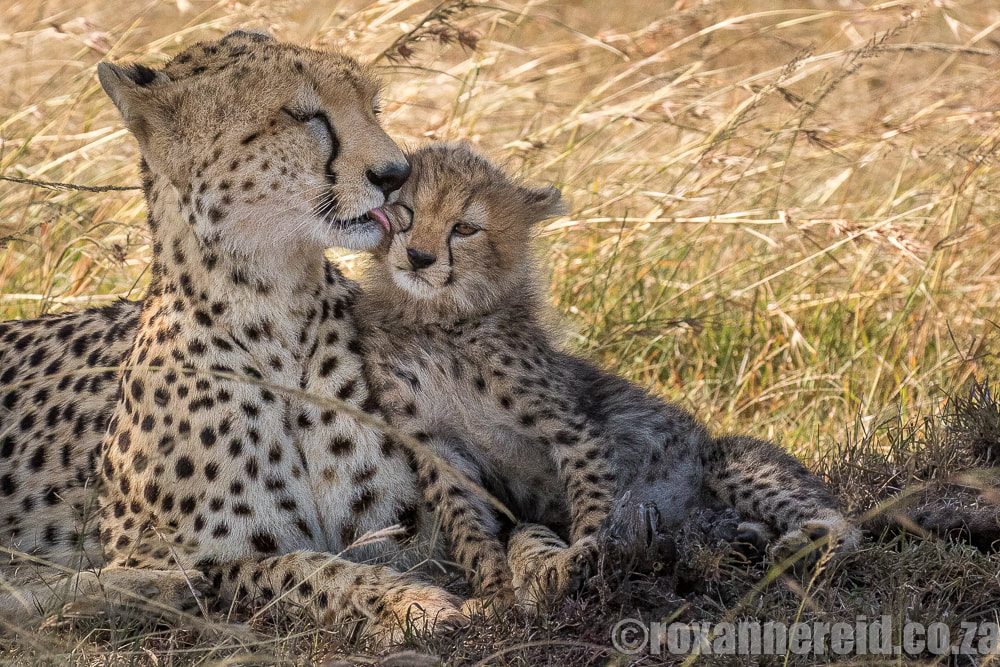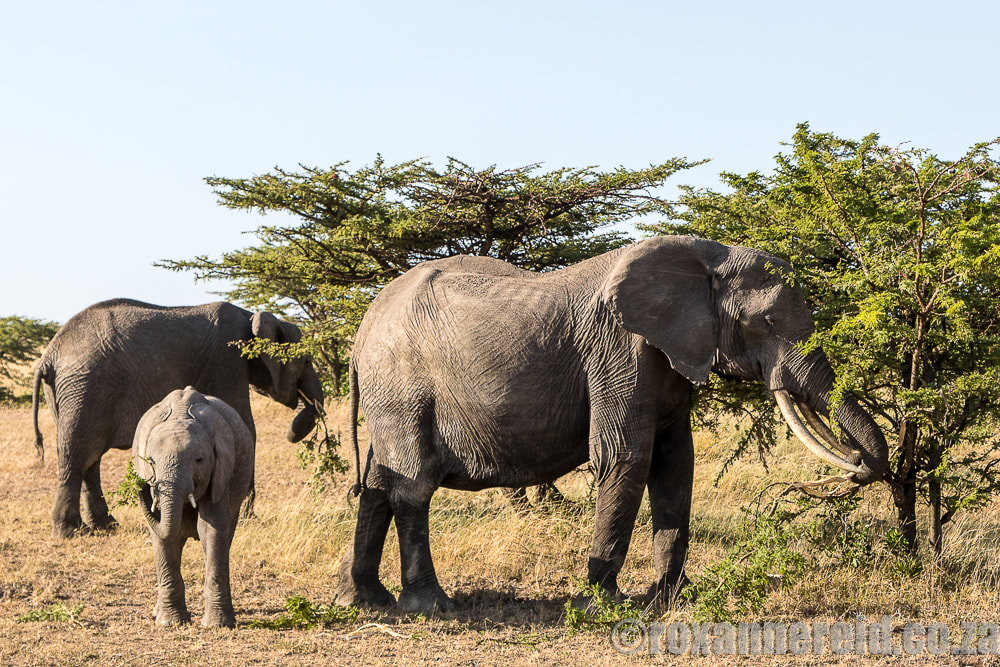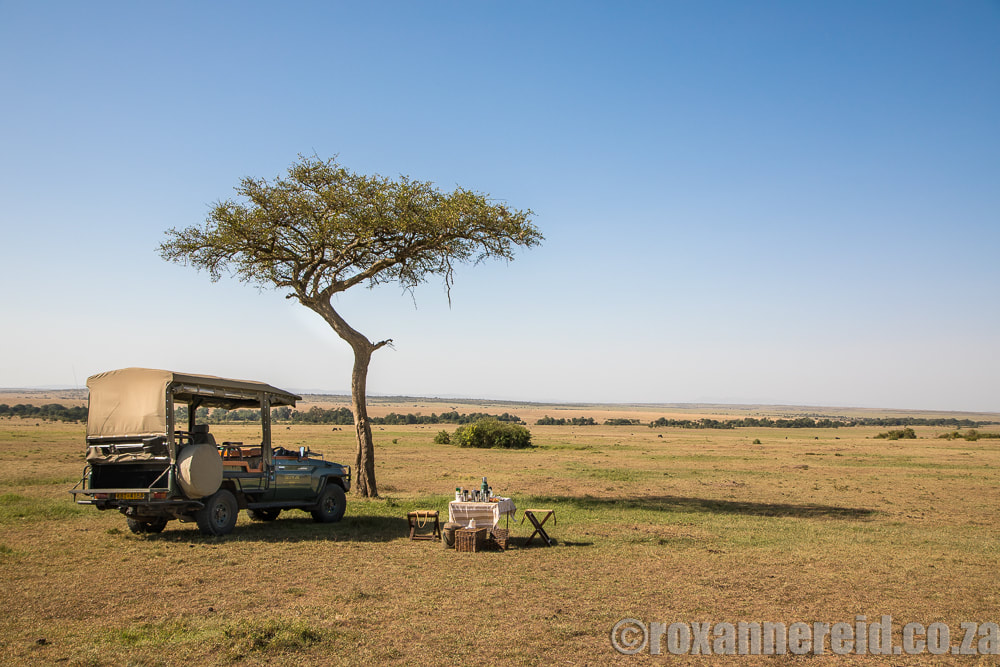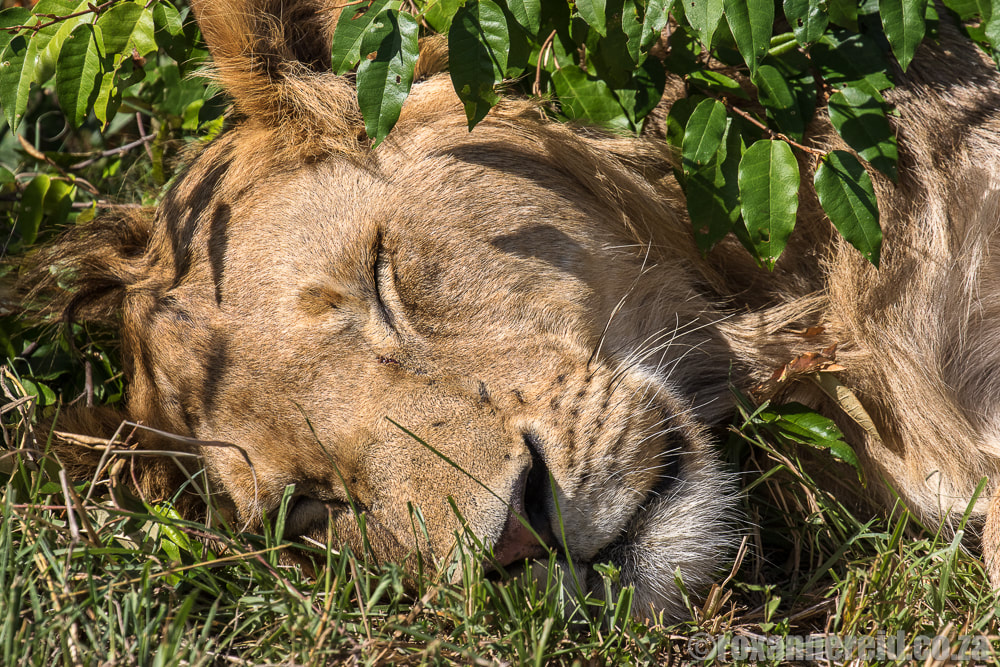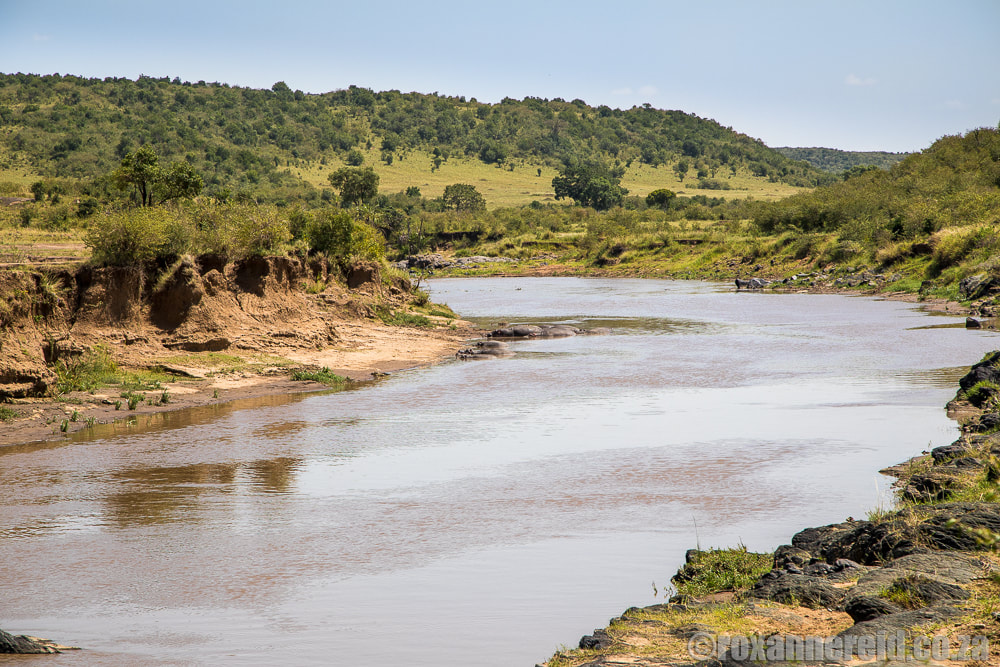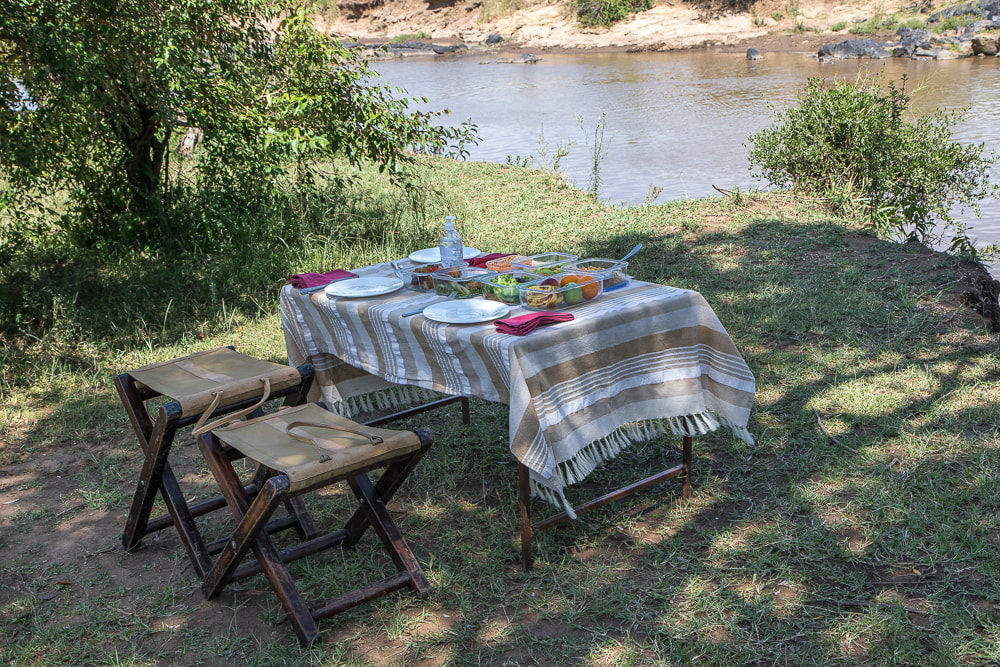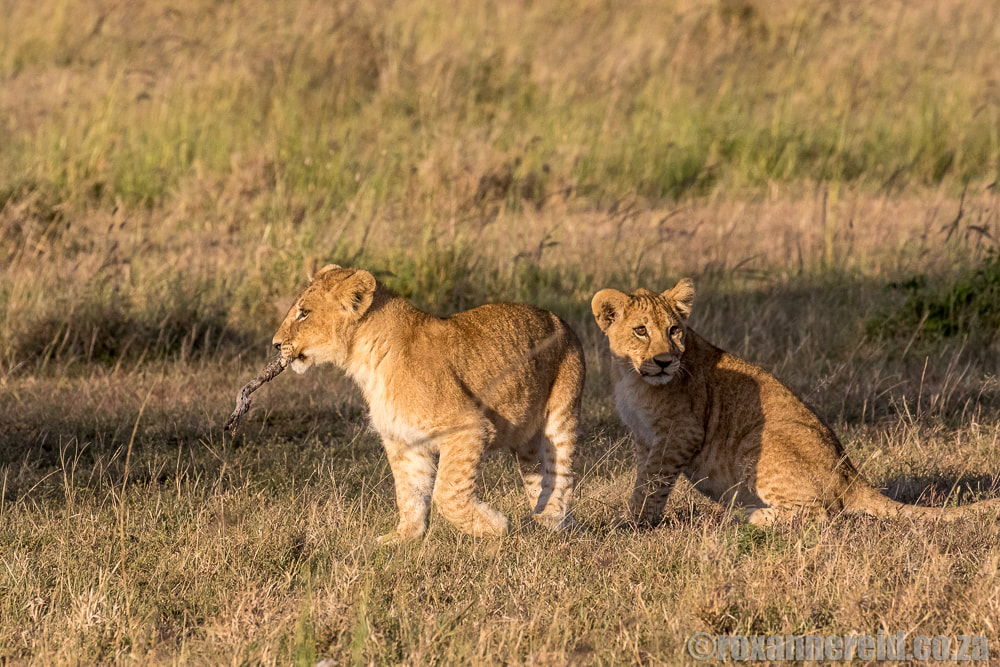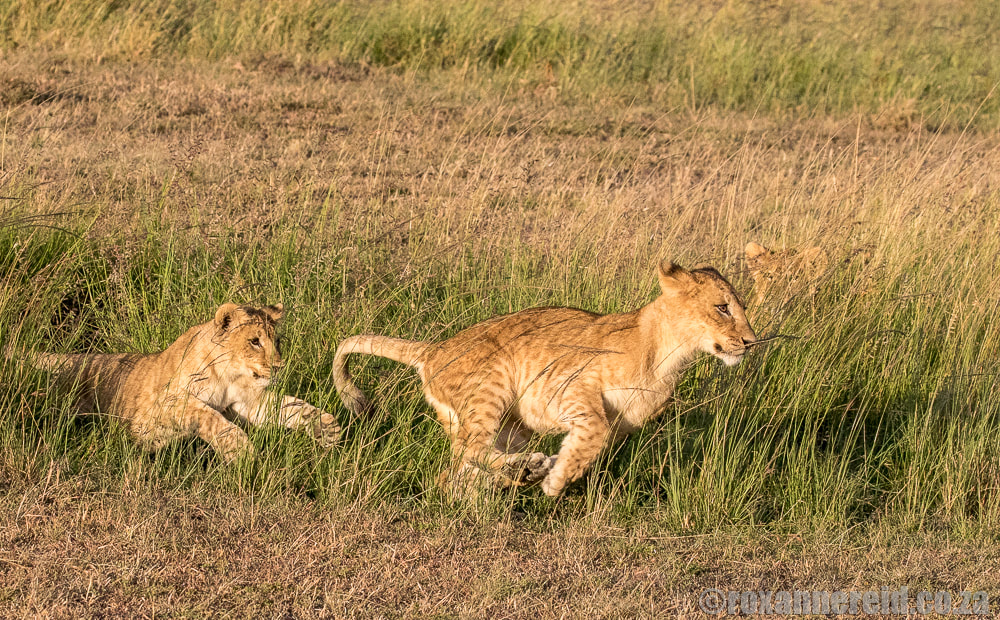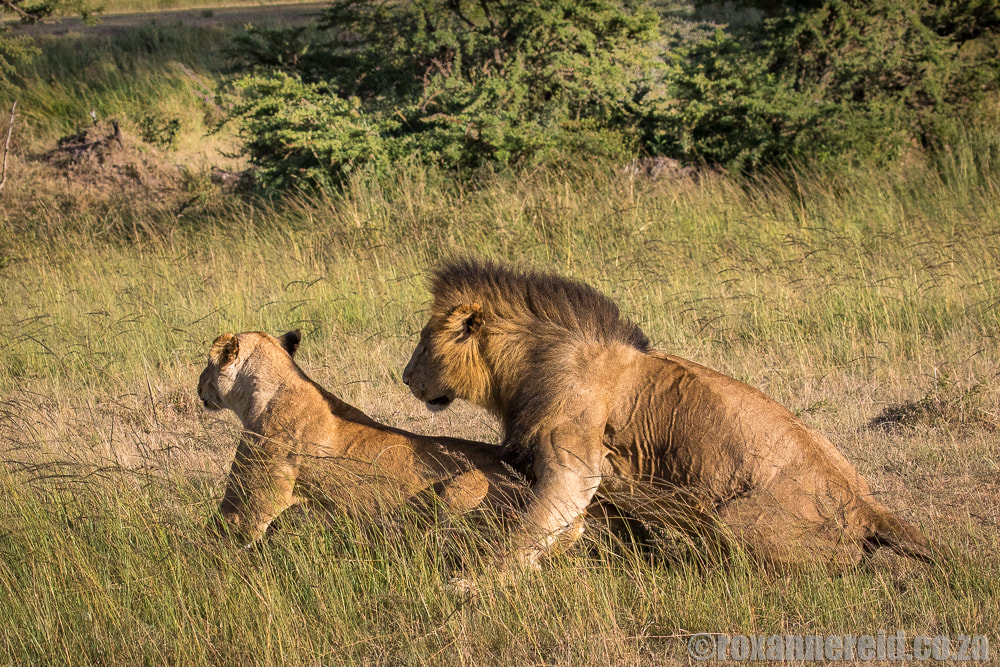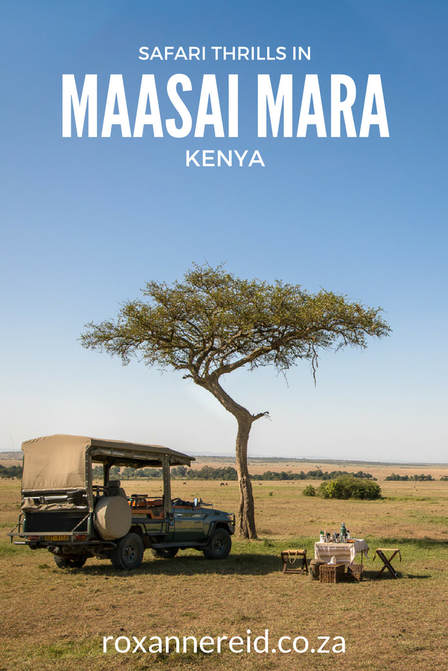Image may be NSFW.
Clik here to view.
Clik here to view.
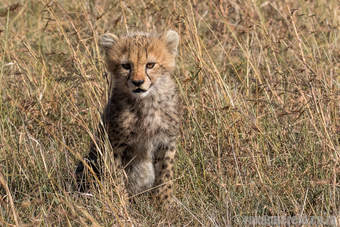
By Roxanne Reid
We woke in the dark to the sound of an elephant trumpeting and hyenas enjoying a pow-wow. We were at Mara Expedition Camp and we were getting ready for a full day of safari thrills in Kenya’s Maasai Mara. Our guide Nick Ratia had spoiled us with lions, leopard and cheetah the previous day. We hoped he was still on form.
We woke in the dark to the sound of an elephant trumpeting and hyenas enjoying a pow-wow. We were at Mara Expedition Camp and we were getting ready for a full day of safari thrills in Kenya’s Maasai Mara. Our guide Nick Ratia had spoiled us with lions, leopard and cheetah the previous day. We hoped he was still on form.
Not far from Mara Expedition Camp, while the moon was still up and the air cold, we found two bat-eared foxes near their den and watched them warming up in the early sunlight before scampering off into the distance.
Cheetahs and lions
Nick drove back to where we’d seen the cheetah and her cub the previous evening, scanning the area to find them. This time mom was sitting up. Although the cub suckled a little, it was as hyped as any toddler, jigging up and down, going on little adventures a short distance away from mom then bounding back again. Mom lay down sphinx-like and the cub tried to tackle her paws, her head. It all ended in lots of pink-tongued licking.
Cheetahs and lions
Nick drove back to where we’d seen the cheetah and her cub the previous evening, scanning the area to find them. This time mom was sitting up. Although the cub suckled a little, it was as hyped as any toddler, jigging up and down, going on little adventures a short distance away from mom then bounding back again. Mom lay down sphinx-like and the cub tried to tackle her paws, her head. It all ended in lots of pink-tongued licking.
It was still cool enough for us to spy on some sub-adult lions chasing and wrestling in a riverbed. We amused ourselves by estimating their ages from the colour of their noses. At three years the nose is still pink, at four it gets some dark spots, by seven or eight it’s patchy. Only at ten years old is it fully dark. Nick said the number and placement of the top row of whiskers and their relation to the next row is unique and used to identify individuals.
We found the remains of a baby impala slung in a tree but no sign of the leopard that put it there. Three elephants, one a youngster with newly budding tusks, snacked on a Gerard’s acacia, breaking off whole branches and stuffing them in their mouths, not caring about the large thorns. ‘They like the crunch, like chips,’ said Nick.
We stopped under a lone desert date tree on the wide, open plain for breakfast, a classic Kenyan scene. A low table and folding chairs were unpacked from the vehicle and spread with more yummies than three people could possibly eat. ‘We’re in the Mara,’ a little voice kept whispering, reminding me how special this experience was.
Image may be NSFW.
Clik here to view.
Clik here to view.
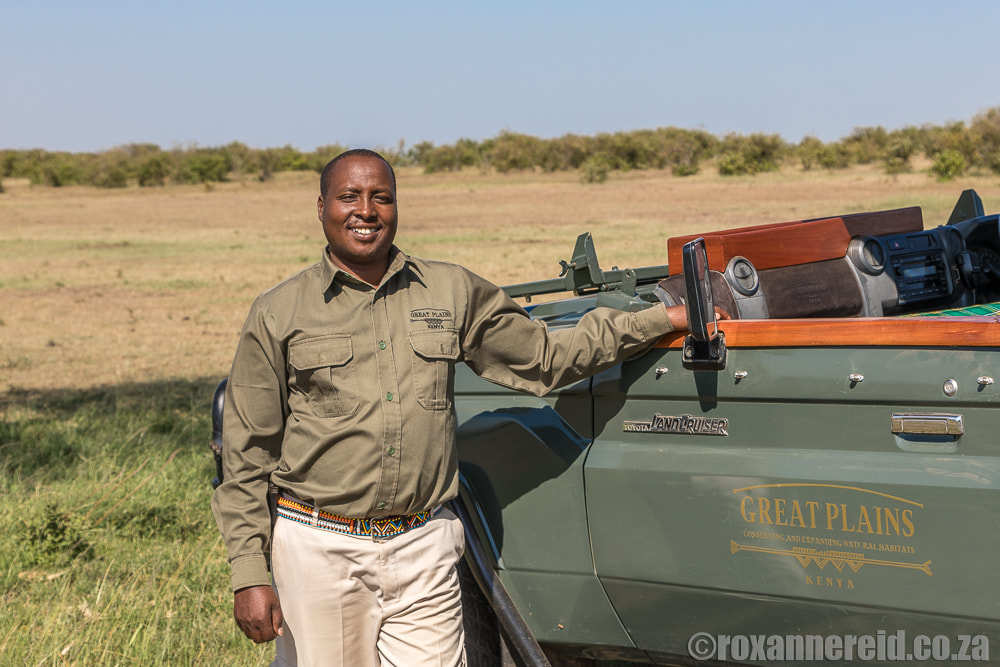
Guide Nick Ratia
After breakfast, we found five lions sleeping, topi standing on termite mounds to keep an eye out for predators, and a herd of eland. The older bulls were more grey than tawny and their feet clicked quite loudly as they walked. Nick explained that as they get older, the two ‘toes’ of the hoof click as they open and close.
Migration crossing point
So far we’d been in the Olare Motorogi Conservancy bordering the Maasai Mara National Reserve. Now we passed through the gate into the reserve and found four maned lions resting under a bush. One called Scarface had only one eye. The coalition is called the Four Musketeers and Nick said they’re adept at taking down hippos.
This was the fifth group of different lions we’d seen in just 24 hours while staying at Mara Expedition Camp.
So far we’d been in the Olare Motorogi Conservancy bordering the Maasai Mara National Reserve. Now we passed through the gate into the reserve and found four maned lions resting under a bush. One called Scarface had only one eye. The coalition is called the Four Musketeers and Nick said they’re adept at taking down hippos.
This was the fifth group of different lions we’d seen in just 24 hours while staying at Mara Expedition Camp.
Nick’s mission was to take us to one of the migration crossing points on the Mara River, although it was a few weeks till the wildebeest would be coming through there. We found giraffes, a huge pod of hippos basking half-submerged in the water, and a few crocs. On the other side of the river was Tanzania’s Serengeti, from where the migration would appear in a column of dust.
More hippo and some big-ass crocs at a few other crossing points, then we stopped at Chinese Crossing (where the Chinese put up live webcams in 2012 and live-streamed the migration to Chinese TV). Here we had lunch on the riverbank, where we could watch elephants and hippo; another magnificent view, another memorable picnic.
More lions
But the Mara still had more in store for us. On our way back to camp we saw 11 lions of the Topi Plains pride, a splinter pride of the Marsh pride. One was a small cub of only about two- to three-months old. They were all lying in the sun and warmly lazy. Closer to camp we spotted the dominant male of this pride. His scarred face and a wound on his back leg showed that he’d had some battles to hold on to his status.
On our last game drive the next morning, we found the dominant male of the Seketa pride walking through the bush, then 14 females and cubs of the same pride playing, jumping up on their hind legs and showing their white tummies, wrestling and tackling. One carried off a clump of grass in its mouth, another came to sharpen its claws on an acacia tree near us. One grabbed a stick and another snatched the other end for a tug-of-war to prove whose jaws were strongest.
But the Mara still had more in store for us. On our way back to camp we saw 11 lions of the Topi Plains pride, a splinter pride of the Marsh pride. One was a small cub of only about two- to three-months old. They were all lying in the sun and warmly lazy. Closer to camp we spotted the dominant male of this pride. His scarred face and a wound on his back leg showed that he’d had some battles to hold on to his status.
On our last game drive the next morning, we found the dominant male of the Seketa pride walking through the bush, then 14 females and cubs of the same pride playing, jumping up on their hind legs and showing their white tummies, wrestling and tackling. One carried off a clump of grass in its mouth, another came to sharpen its claws on an acacia tree near us. One grabbed a stick and another snatched the other end for a tug-of-war to prove whose jaws were strongest.
With about eight cubs of various ages, there was action everywhere. One of them climbed into the acacia tree while a pride-mate hooked its paw onto its back leg and tried to pull it down. Getting up the tree was the easy part; getting back down was a lot less elegant.
Thinking we’d seen enough lions to last a lifetime, we left the cubs. We were still grinning at their antics when we stumbled across a mating pair whose coupling ended in a snarling-cuffing-biting climax. She rolled onto her back, legs in the air. He was at it again five minutes later, but seemed to be struggling. Not impressed, she just walked off, so they were further away when we watched a third more successful coupling.
A lion mates up to eight times an hour, for about 20 seconds each time. This continues for four or five days at a stretch. He doesn’t eat. He doesn’t think of anything else. It takes many mountings to stimulate ovulation and he focuses on ensuring his genes are carried through to the next generation.
It’s almost as impressive as the number of lion sightings we had during 48 hours at Great Plains Conservation’s Mara Expedition Camp.
Note: I was a guest of Great Plains Conservation’s Mara Expedition Camp for two nights, but I was given free rein to write what I chose.
Did you enjoy the article? Pin this image!
It’s almost as impressive as the number of lion sightings we had during 48 hours at Great Plains Conservation’s Mara Expedition Camp.
Note: I was a guest of Great Plains Conservation’s Mara Expedition Camp for two nights, but I was given free rein to write what I chose.
Did you enjoy the article? Pin this image!
More about Kenya
Copyright © Roxanne Reid - No words or photographs on this site may be used without permission from roxannereid.co.za
Copyright © Roxanne Reid - No words or photographs on this site may be used without permission from roxannereid.co.za
